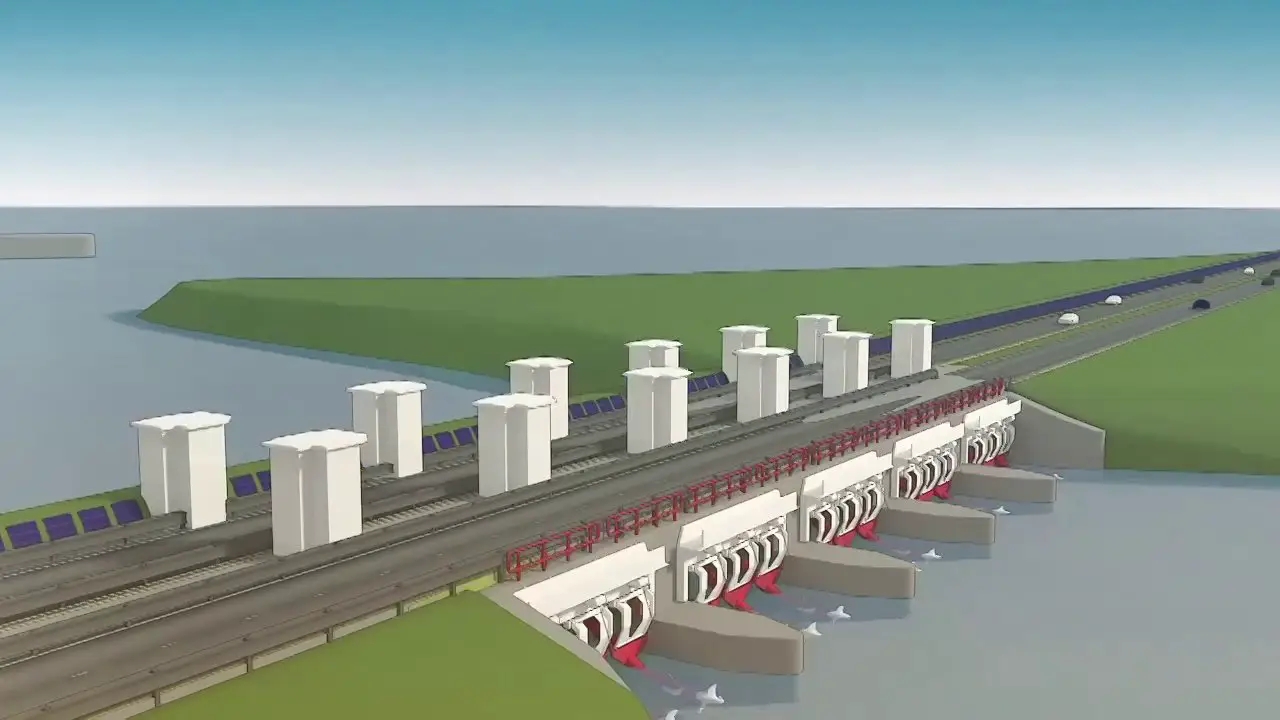A Blue Barriers combines flood defence with electricity generation from a tidal range. It is an onshore civil construction with good accessibility compared to offshore power generation sites, making it significantly cheaper to install and maintain. Due to the tidal movements, the waterflow changes direction according to the tide, and bi-directional turbines are to be used.
This puts special conditions on applicable turbines. These should be optimized for both flow directions and the prevailing head as to maximize the electrical output. Depending on the location, the head is usually limited to 15 meters, and in the Netherlands even to about 4 meters. These turbines must also be able to withstand the seawater climate and be physically compact. Forced flow turbines are, due to their smaller size and the higher flow velocities than in open sea, more appropriate compared to free flow turbines of the same power. And through a correct forced-flow design, the water management function of the flood defence can also be improved by means of the hydroelectric power station. In recent years, various innovative fish-friendly turbines have been developed that meet the above conditions and many locations for energy dikes have been identified.
As an example, with the Delta Works in 1974, the Dutch established their reputation as global experts in water management. The Brouwersdam and the Grevelingendam are part of the Delta Works. However, with the arrival of these flood defences, tides in the enclosed Grevelingenmeer disappeared, causing the oxygen content to drop sharply with a major ecological impact. By constructing an energy dyke at the Brouwersdam, tidal movements can be restored. A world first: a flood defence with an innovative tidal energy demonstration set-up that, whilst maintaining safety, improves water management and water quality on the one hand, and delivers 100 MW of power to supply 100,000 homes with electricity on the other hand.
With the right design and the right turbines, it is quite possible to achieve this with a low ecological impact; high animal safety, no greenhouse gas emissions and improved morphology.
